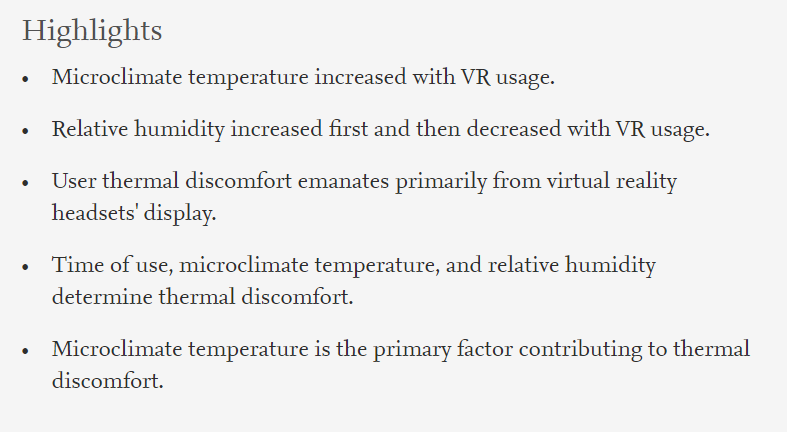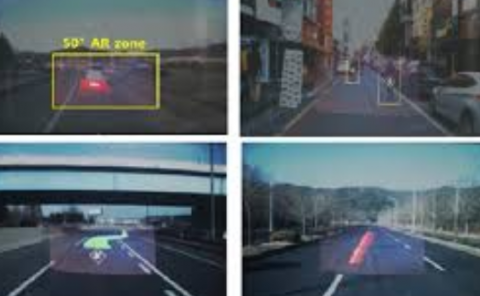Thermal comfort and virtual reality headsets
PubDate: May 2020
Teams: Hunan University
Writers: Zihao Wang;Renke He;KeChen
PDF: Thermal comfort and virtual reality headsets

Abstract
This study proposed to investigate the thermal properties and subjective thermal discomfort of five virtual reality headsets, and their relationships. Twenty-seven university students used each of the five headsets for 45 min. Microclimate temperature and relative humidity were measured by miniature dataloggers. Infrared thermography was used to measure temperature distribution on the contact points between user’s face and the headsets. Participants reported subjective thermal discomfort associated with using each headset.
The average microclimate temperature and relative humidity increased by 7.8 °C and 3.5% respectively after headset use. Overall subjective thermal discomfort increased along with duration of use and came primarily from the display. Applying the linear mixed-effects model showed that subjective thermal discomfort is positively correlated with duration of use, microclimate temperature, relative humidity and display coverage area. Conversely, thermal discomfort is negatively correlated with total coverage area, with microclimate temperature acting as the most significant contributing factor. The headsets were ranked by pairing the objective measurements with subjective evaluations.



